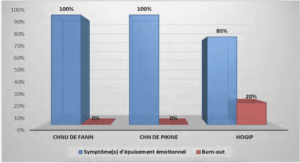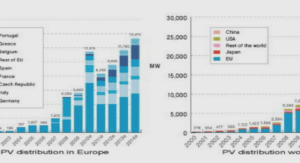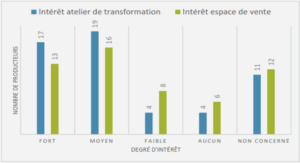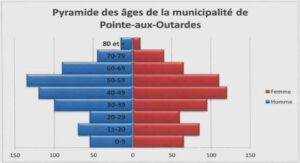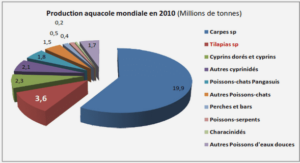Observations des satellites CLUSTER et DOUBLE STAR
The CIS experiment
The prime scientific objective of the CIS experiment is the study of the dynamics of magnetized plasma structures in and in the vicinity of the Earth’s magnetosphere, with the determination, as accurately as possible of the local orientation and the state of motion of the plasma structures required for macrophysics and microphysics studies. To achieve the scientific objectives, the CIS instrumentation has been designed to satisfy the following criteria, simultaneously on the 4 spacecraft: a. Provide a uniform coverage of ions over the entire 4 steradian solid angle with good angular resolution. b. Separate the major ion species from the solar wind and ionosphere. c. Have high sensitivity and large dynamic range to support high-time-resolution measurements over the wide range of plasma conditions. d. Have the ability to routinely generate on-board the fundamental plasma parameters for major ion species and with one spacecraft spin time resolution (4 seconds). e. Cover a wide range of energies, from spacecraft potential to about 40 keV/e. f. Have versatile and easily programmable operating modes and data-processing routines to optimize the data collection for specific scientific studies and widely 31 varying plasma regimes. To satisfy all these criteria, the CIS package consists of two different instruments (Fig. 2.1): a Hot Ion Analyser (HIA) sensor and a time-of-flight ion COmposition and DIstribution Function (CODIF) sensor. The CIS plasma package is capable of measuring both the cold and hot ions of Maxwellian and non-Maxwellian populations from the solar wind, the magnetosheath, and the magnetosphere with sufficient angular, energy and mass resolutions.
The photo of the CODIF (left) and HIA (right) sensors
The Hot Ion Analyser (HIA) instrument combines a symmetrical quadrispherical electrostatic analyzer with a fast imaging particle detection system based on microchannel plate (MCP) electron multipliers and position encoding discrete anodes. Fig.2.2 provides a cross-sectional view of the HIA electrostatic analyser. 32 The HIA instrument has two180° field of view sections parallel to the spin axis with two different sensitivities, corresponding respectively to the ‘high G’ (high geometrical factor) and ‘low g’ (low geometrical factor) sections. The ‘low g’ section allows detection of the solar wind and the required high angular resolution is achieved through the use of 8 x 5.625° central anodes, the remaining 8 sectors having in principle 11.25° resolution; the 180° ‘high G’ section is divided into 16 anodes, 11.25° each. Fig. 2.3 illustrates the principle of the HIA anode sectoring. Fig.2.2 Cross-sectional view of the HIA analyser. The CODIF instrument is a high-sensitivity mass-resolving spectrometer with an instantaneous 360° x 8° field of view to measure complete 3D distribution functions of the major ion species, within one spin period of the spacecraft.. The sensor primarily covers the energy range between 0.02 and 38 keV/charge. 33 The electrostatic analyser (ESA) has a toroidal geometry, consisting of inner and outer analyser deflectors, a top-hat cover and a collimator. The full angular range of the analyser is divided into 16 channels of 22.5° each. In order to extend the energy range of the CODIF sensor to energies below 15 eV/e, a retarding potential analyser assembly is incorporated in the two CODIF apertures (see Fig.2.4). The retarding potential analyser provides a way of selecting low-energy ions at the entrance of the CODIF analyser without requiring the electrostatic analyzer inner deflector to be set accurately near zero Volt. Fig. 2.3. Principle of the HIA anode sectoring. CODIF uses a time-of-flight spectrometer to resolve the different plasma species. This section lies between the exit from the deflection plates and the solid state detector. In the time-of-flight spectrometer, the velocity of the incoming ions is measured. The 34 flight path of the ions is defined by the 3 cm distance between the carbon foil at the entrance and the surface of the ‘stop’ microchannel plate (MCP). The start signal is provided by the secondary electrons emitted from the carbon foil during the passage of the ions. The detection of the ions at the MCP marks the stop time. Knowing the velocity and the energy per charge of the detected ions, their mass per charge can be deduced. Fig.2.4 provides a cross-sectional view of the CODIF sensor. Fig.2.4. Cross-sectional view of the CODIF sensor. 3. The fluxgate magnetometer Many types of magnetometers measure the magnetic field by using the potential difference produced by a change in the magnetic flux. Fluxgate magnetometers are using the variation of the relative permeability with the intensity of the magnetic field to measure static or low frequency magnetic fields. A pick-up coil is wounded around two parallel ferromagnetic cores made from high permeability material. The ferromagnetic cores are periodically driven deep in and out saturation by the drive 35 windings. The strong nonlinear coupling due to core saturation results in harmonics of the driven frequency in the pick-up coil. The amplitude of the even harmonics is proportional to the component of the magnetic field parallel with the cores. The FGM instrument on each spacecraft of the Cluster mission consists of two triaxial fluxgate magnetic field sensors, one at the end of a 5m long radial boom, and the second 1.5m inboard from the tip of the boom. The sampling of vectors from the magnetometer sensor designated as the primary sensor is carried out at the rate of 201.793 vectors/s. It can also provide measurements with high resolution up to 8 pT. 4. The Double Star Program Double Star Program (DSP) is the first joint space mission between the China National Space Administration and the European Space Agency. The DSP consists of two satellites: the equatorial satellite of DSP (TC-1) and the polar satellite of DSP (TC-2). The first spacecraft, TC-1 was launched on December 29, 2003, and the second one, TC-2, was launched on July 25, 2004. The TC-1 is at an eccentric equatorial orbit with a 280 inclination and an apogee of about 13.4RE and the TC-2 is at a polar orbit with an apogee of about 6.0RE. The equatorial satellite of DSP with on-board particle and field instruments detect the physical processes of magnetic storms and magnetospheric substorms in the near-Earth magnetotail, as well as the energy transfer from the solar wind to the magnetosphere via the dayside magnetopause. The polar satellite of DSP, capable of making remote sensing observations as well, detect energy transfer from the solar wind and the near-Earth magnetotail to the polar ionosphere and upper atmosphere, as well as ionized particle transfer from the ionosphere to the magnetosphere. Each Double Star spacecraft carries eight scientific instruments. Among several European instruments on board this spacecraft, which are identical to those developed for the Cluster spacecraft, the HIA (Hot Ion Analyzer) instrument (Rème et al., 2005) on board the TC-1 spacecraft is an ion spectrometer nearly identical to the HIA sensor 36 of the CIS instrument on board the 4 Cluster spacecraft. This instrument has been specially adapted for TC-1: a. The interface board has been changed. b. In order to include radiation shielding, taking into account the orbit of TC-1, the size of the box has been increased by 4mm on each side, on the top and on the rear, and the total mass of the sensor is 3.5 kg. c. There is a new interface for telemetry. d. The telemetry products have some changes. e. There is a new interface for commanding. f. The telemetry data rate is 4.44 kbits/s (The rate for Cluster is 5.5 kbits/s). The HIA instrument onboard the Cluster mission has two sections with two different sensitivities (different geometrical factors), corresponding respectively to the ‘high G’ and ‘low g’ sections, where the ‘low g’ section is designed mainly for solar wind studies. For Double Star the instrument operation is on the “high G” section, since the spacecraft was planned to rarely cross the average (model-predicted) position of the bow shock. However, due to the higher apogee than scheduled of the TC-1 spacecraft, and to the bow shock in/out motion around its average position, the spacecraft frequently gets into the solar wind but stays near the bow shock thanks to its skimming orbit. There are three Chinese high-energy particle instruments (Cao et al., 2005) on board both TC-1 and TC-2: a. The High Energy Electron Detectors (HEED) measure high energy electrons in the range of 200 keV to 10MeV. b. The High Energy Proton Detectors (HEPD) measure high energy protons in the energy range 3MeV to 400 MeV. c. The Hot Ion Detectors (HID) measure high energy heavy ions in the energy range 10MeV (He) to 8 GeV (Fe) with atomic numbers from 2 (He) to 26 (Fe). The Low Energy Ion Detector (LEID) is mounted only on the polar orbit satellite and is used to measure energy spectrum, the 3-D velocity distribution function and the 37 differential flux of low energy ions. The working principle and hardware design of LEID are almost identical to that of HIA on board the Cluster. However, the software of LEID is different from that of HIA. On board TC-2, LEID does not perform any processing of the raw data, and the complete ion distribution functions are sent into the telemetry. Thus, the time resolution of LEID is only 12 s (3 times the satellite spin period) due to the telemetry limitation. LEID only produces the 3-D velocity distribution function for the first spin period of each 12-s interval.
Résumé |
